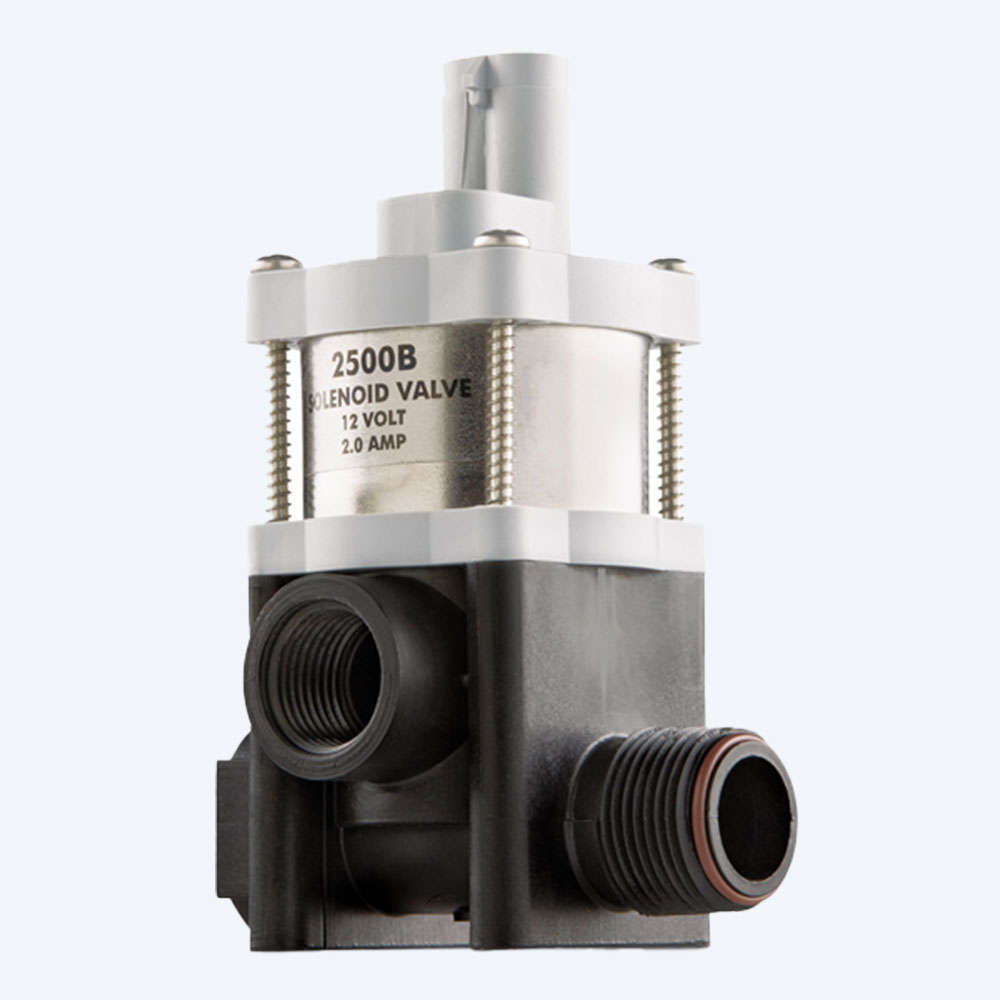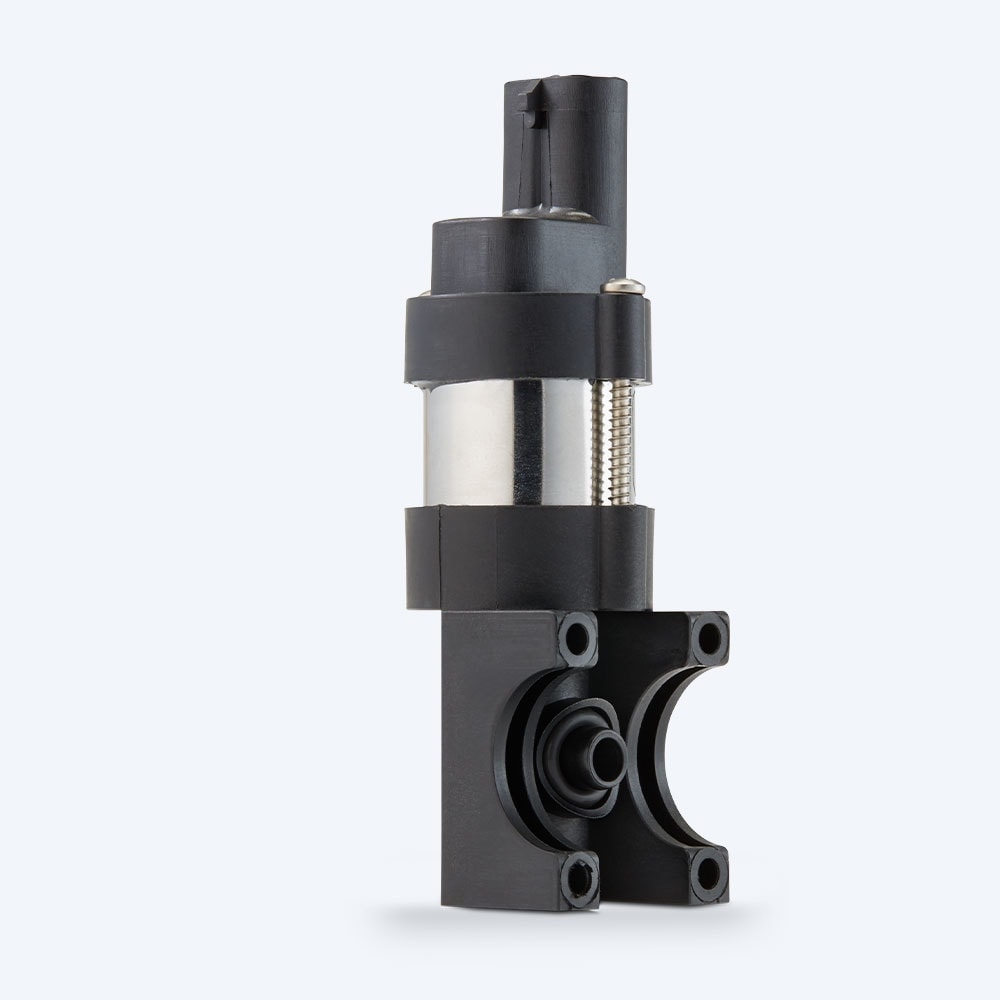What is the purpose of a 3-way mixing valve?
Understanding 3-Way Valves
Understanding the functionality and applications of 3-way valves is essential for efficient crop spraying and other agricultural practices. These versatile valves can significantly improve your fluid control system.
Function of 3-Way Valves
A 3-way valve is designed to control the flow of fluids by mixing or diverting them through three different ports. These valves can perform critical functions in fluid control systems such as:
- Mixing two separate fluid streams into a single output
- Diverting fluid from one path to another
- Creating a bypass route for fluid flow (Plumberstar)
The ability to mix and divert fluids makes 3-way valves highly versatile and efficient for various applications.
Applications of 3-Way Valves
3-way valves are widely used in various industries, including agriculture, HVAC, plumbing, and chemical processing. In agriculture, particularly for crop spraying, 3-way solenoid valves offer a cost-effective means to control fluid flow and improve system efficiency (Baelz North America).
Some common applications of 3-way valves include:
- Industrial Boilers: Controlling steam flow and mixing different water streams
- Chemical Mixing Pipelines: Combining different chemicals for processing
- Steam Collection and Distribution Systems: Managing steam flow in large systems
- Air Conditioning Devices: Regulating coolant flow for temperature control
- Complex Piping Systems: Managing primary and secondary loops for fluid distribution (Pumps & Systems)
| Application | Function |
|---|---|
| Industrial Boilers | Controlling steam flow |
| Chemical Mixing Pipelines | Combining different chemicals |
| Steam Collection and Distribution | Managing steam flow |
| Air Conditioning Devices | Regulating coolant flow |
| Complex Piping Systems | Managing primary and secondary loops |
For more detailed information on how 3-way valves can benefit your agricultural practices, visit our article on what is a 3-way valve used for.
3-way valves offer a versatile and efficient solution for controlling fluid flow in various applications, making them an invaluable tool in your crop spraying operations. For further insights into the differences between 2-way and 3-way valves, check out our guide on what is the difference between a 2-way and 3 way solenoid valve.
Types of 3-Way Valves
When considering the best type of 3-way valve for your agricultural needs, understanding the differences between various configurations is essential. Here, we will explore T-Port vs. L-Port valves, and Manual vs. Automated valves.
T-Port vs. L-Port Valves
3-way valves can be configured as either T-Port or L-Port, each offering distinct advantages depending on the application. T-Port valves allow fluid to be diverted to two different destinations simultaneously, making them ideal for mixing fluids or directing flow to multiple outlets. On the other hand, L-Port valves provide fluid diversion to one direction at a time, which is useful for switching between two different fluid paths.
| Valve Type | Configuration | Fluid Direction |
|---|---|---|
| T-Port | Three-way connection | Diverts to two destinations simultaneously |
| L-Port | Three-way connection | Diverts to one destination at a time |
For applications where precise control of fluid direction is required, such as in crop spraying, T-Port valves can offer greater flexibility. L-Port valves, however, are more suited for simpler operations requiring directional changes. To learn more about how these configurations can benefit your systems, visit our guide on what is a 3-way valve used for?.
Manual vs. Automated Valves
3-way valves can also be categorized based on their method of operation: manual or automated. Manual valves rely on a physical lever or handle for operation, providing straightforward control and ease of use. These valves are well-suited for applications where automation is not necessary or where budget constraints exist.
Automated valves, on the other hand, utilize electric, pneumatic, or hydraulic actuators to operate. These actuators enable remote control and automation, enhancing efficiency and precision in fluid management. The type of actuator chosen depends on the level of automation required, responsiveness, and actuation forces needed (Pumps & Systems).
| Operation Type | Method | Advantages |
|---|---|---|
| Manual | Lever or handle | Cost-effective, easy to operate |
| Automated | Electric, pneumatic, or hydraulic actuators | Remote control, enhanced efficiency |
Choosing between manual and automated 3-way valves depends on your specific needs and the complexity of your agricultural systems. For more insights on selecting and implementing 3-way valves, visit our article on which of the following is the purpose of a three way solenoid valve.
Understanding the different types of 3-way valves and their configurations is crucial for effective fluid management in agricultural applications. Whether you opt for T-Port or L-Port valves, and whether you go for manual or automated options, each type offers unique benefits tailored to your specific needs. For more detailed information on 3-way solenoid valves, visit our 3 way solenoid valve resource.
Benefits of 3-Way Valves
Three-way valves provide numerous advantages for agricultural applications, particularly in crop spraying systems. This section will explore the cost-effectiveness and efficiency, as well as the improved performance that these valves offer.
Cost-Effectiveness and Efficiency
Three-way valves offer a cost-effective means to control fluid flow in various applications. By minimizing or eliminating the need for multiple two-way valves, these valves reduce both installation and maintenance costs. They are particularly beneficial for mixing and diverting operations.
A 3-way valve can mix fluids with varying physical and chemical properties or divert the flow direction based on the configuration of the ports. This capability makes them ideal for use in applications like bypass valves in primary and secondary loop systems, where they can replace several two-way valves (Baelz North America).
| Valve Type | Number of Valves Needed | Cost-Effectiveness |
|---|---|---|
| 2-Way Valves | Multiple | Lower |
| 3-Way Valves | Single | Higher |
Improved System Performance
The precise control offered by 3-way valves allows for more accurate flow regulation, leading to improved system performance. This accuracy results in energy savings and reduced operating costs. By regulating flow speed and pressure, these valves contribute to the overall efficiency of the system (Plumberstar).
Three-way valves are versatile and can divert and change flow direction, making them invaluable in dynamic systems. Their unique design eliminates the need for multiple valves in a line, further enhancing system performance (ValveMan). Additionally, some 3-way ball valves come with features like a locking lever or visual position indicators to enhance functionality and ensure precise flow control.
To explore more about the applications and benefits of 3-way valves, visit our article on what is a 3-way valve used for?. For a deeper understanding of the differences between 2-way and 3-way valves, check out what is the difference between a 2-way and 3 way solenoid valve.
Selecting and Implementing 3-Way Valves
When it comes to selecting and implementing a 3-way solenoid valve for your agricultural needs, there are several factors to consider. This section will guide you through the essential considerations and provide tips for proper installation and maintenance.
Factors to Consider
Choosing the right 3-way valve for your crop spraying system involves assessing various elements to ensure optimal performance and longevity.
- Type of Fluid: The nature of the fluid being controlled is critical. Different fluids have varying chemical properties that can affect the valve’s material and design. For instance, corrosive chemicals require valves made from materials like stainless steel or tungsten carbide (ValveMan).
- Pressure and Temperature: Determine the operating pressure and temperature ranges. High-pressure systems may need valves with reinforced structures, while extreme temperatures might require specific materials to prevent damage.
- Flow Rate: The valve should be capable of handling the desired flow rate without causing significant pressure drops or turbulence. Ensure the valve’s flow capacity matches your system requirements.
- Actuation Method: Decide whether you need a manual or automated valve. Manual valves are suitable for simple, low-frequency adjustments, whereas automated valves (electric, pneumatic, or hydraulic) offer precise and responsive flow control (Pumps & Systems).
- Configuration: Understand the specific configuration required for your application. Three-way valves can be used for mixing or diverting fluids. Make sure the valve’s port arrangement (T-Port or L-Port) aligns with your system’s needs (Baelz North America).
Installation and Maintenance Considerations
Proper installation and maintenance of your 3-way valve are crucial for ensuring efficient operation and extending the valve’s lifespan.
Installation Tips
- Positioning: Install the valve in an accessible location to facilitate easy maintenance and adjustments. Ensure it is properly aligned with the piping system to avoid stress and potential leaks.
- Connection Type: Depending on your system, choose the appropriate connection type, such as threaded, flanged, or welded. Each connection type has its own set of installation requirements and advantages.
- Sealing: Use suitable sealing materials to prevent leaks. Ensure that all connections are tight and secure, but avoid over-tightening, which can damage the valve or piping.
Maintenance Tips
- Regular Inspection: Periodically inspect the valve for signs of wear, corrosion, or damage. Early detection of issues can prevent costly repairs and downtime.
- Cleaning: Depending on the type of fluid and operating conditions, the valve may require regular cleaning to prevent buildup of residues that can impair its function.
- Lubrication: For manual valves, ensure that moving parts are adequately lubricated to maintain smooth operation. Automated valves may have specific lubrication requirements based on the actuator type.
- Replacement of Worn Parts: Keep an inventory of spare parts, such as seals and gaskets, to quickly replace worn components and minimize downtime.
| Consideration | Details |
|---|---|
| Type of Fluid | Corrosive chemicals may require stainless steel or tungsten carbide. |
| Pressure/Temperature | Ensure compatibility with operating ranges. |
| Flow Rate | Match valve’s flow capacity with system requirements. |
| Actuation Method | Choose between manual, electric, pneumatic, or hydraulic. |
| Configuration | Align port arrangement with system’s needs (T-Port or L-Port). |
For more detailed information on the differences between 2-way and 3-way solenoid valves, visit our article on what is the difference between a 2-way and 3 way solenoid valve?. If you have additional questions about the purpose and applications of 3-way valves, check out what is a 3-way valve used for.



